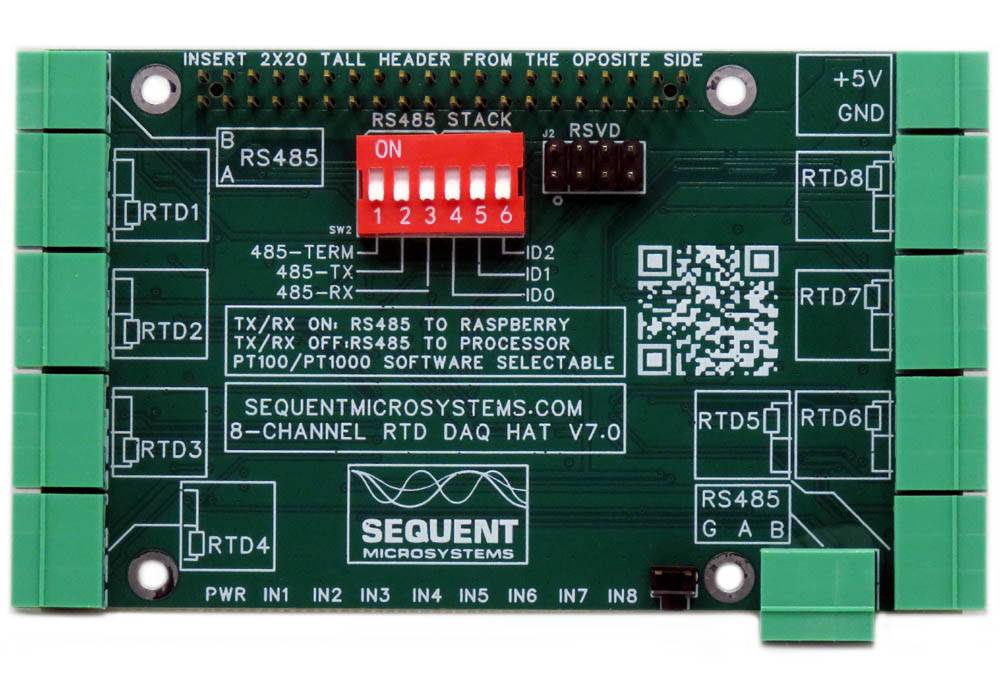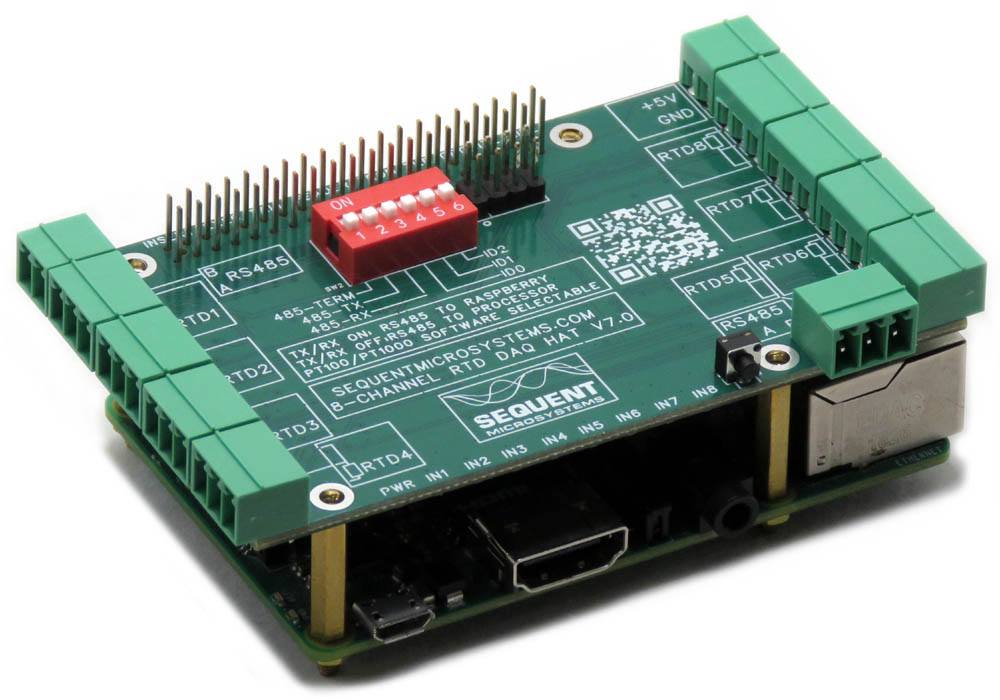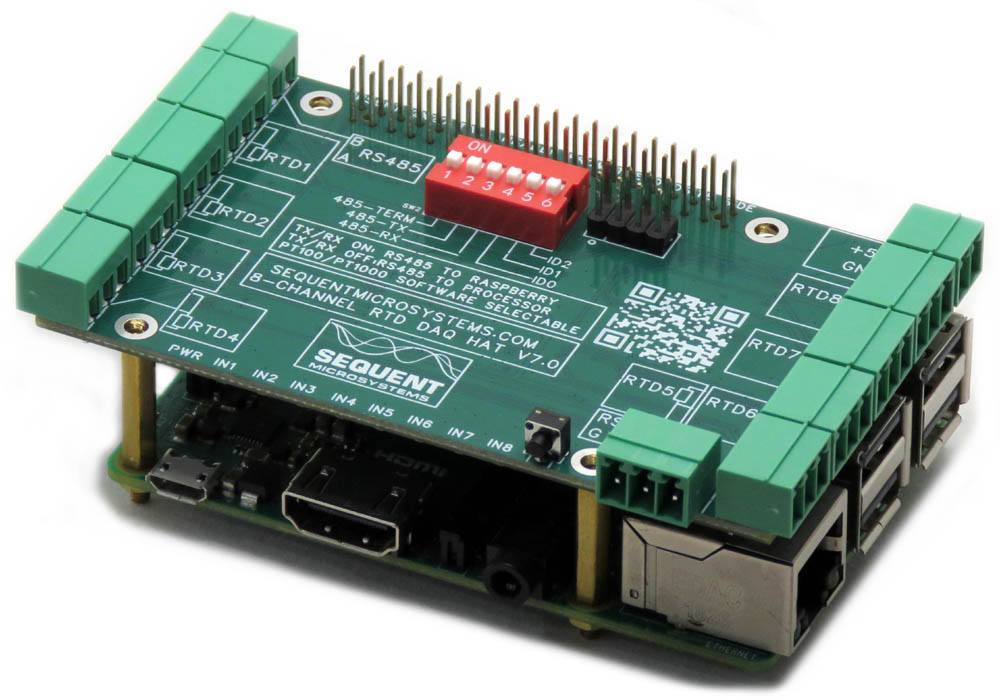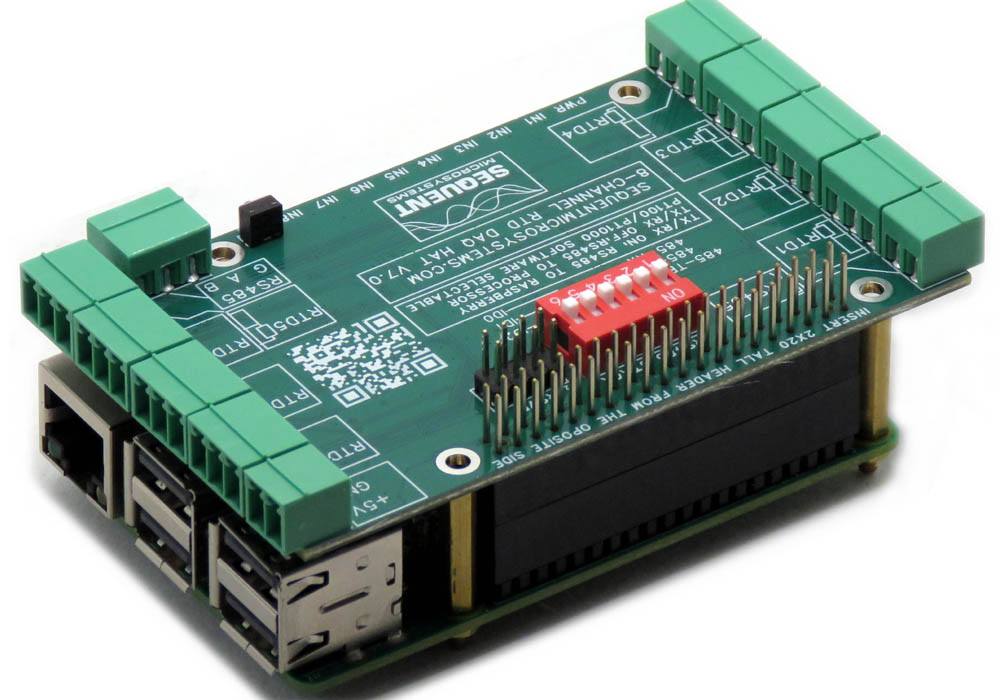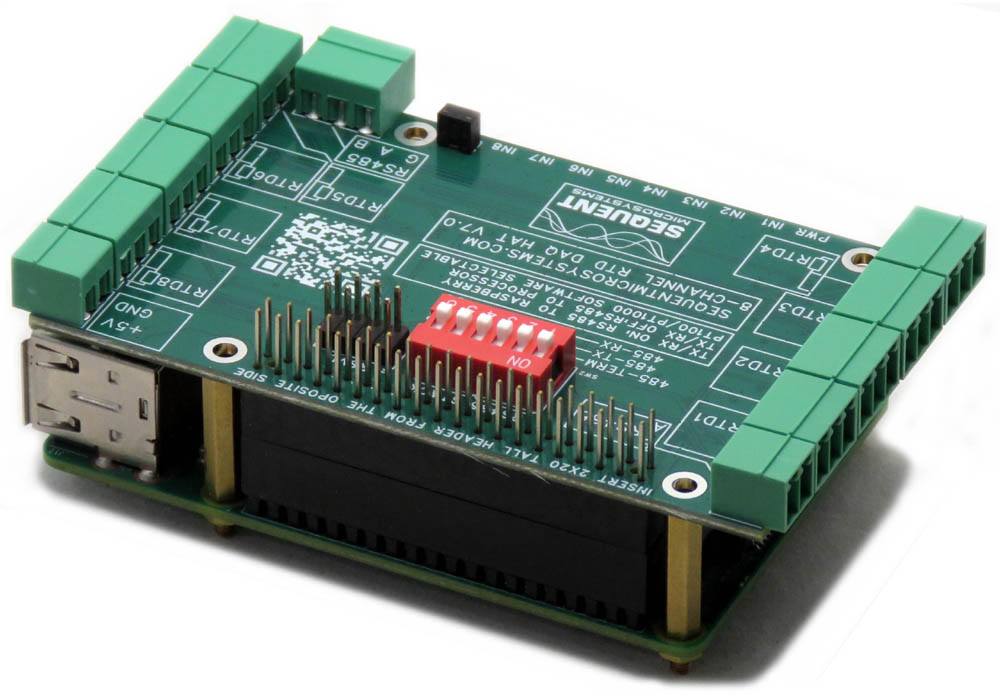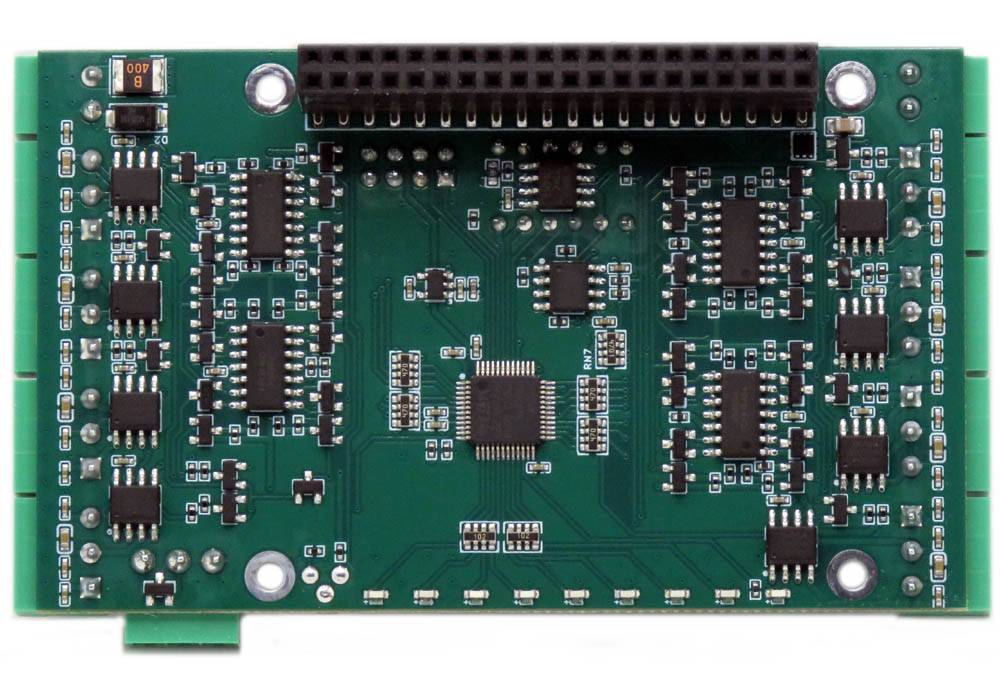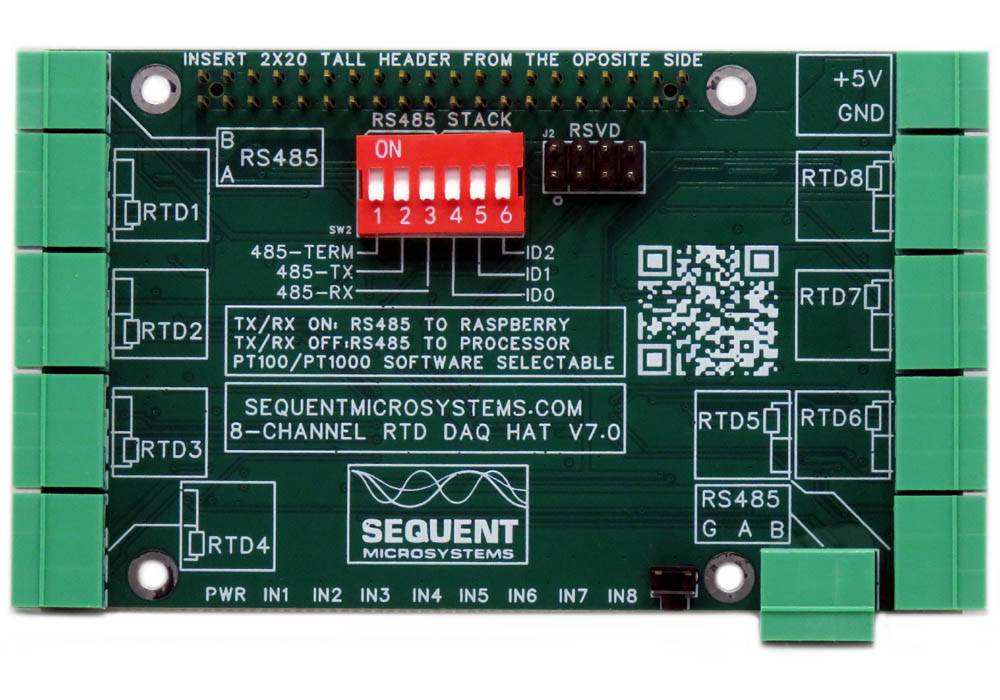
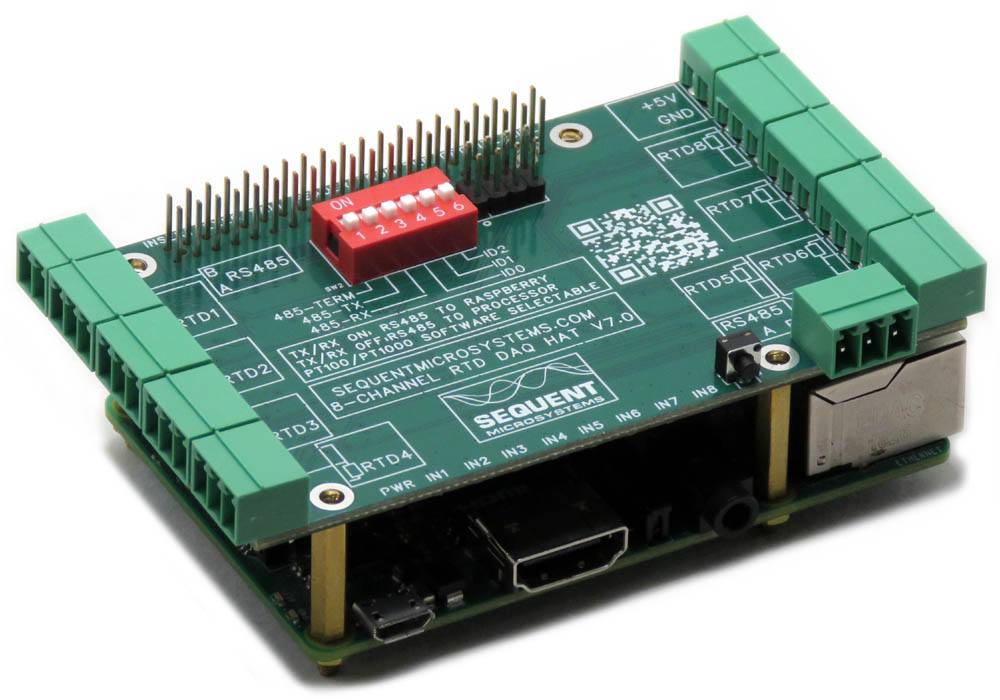
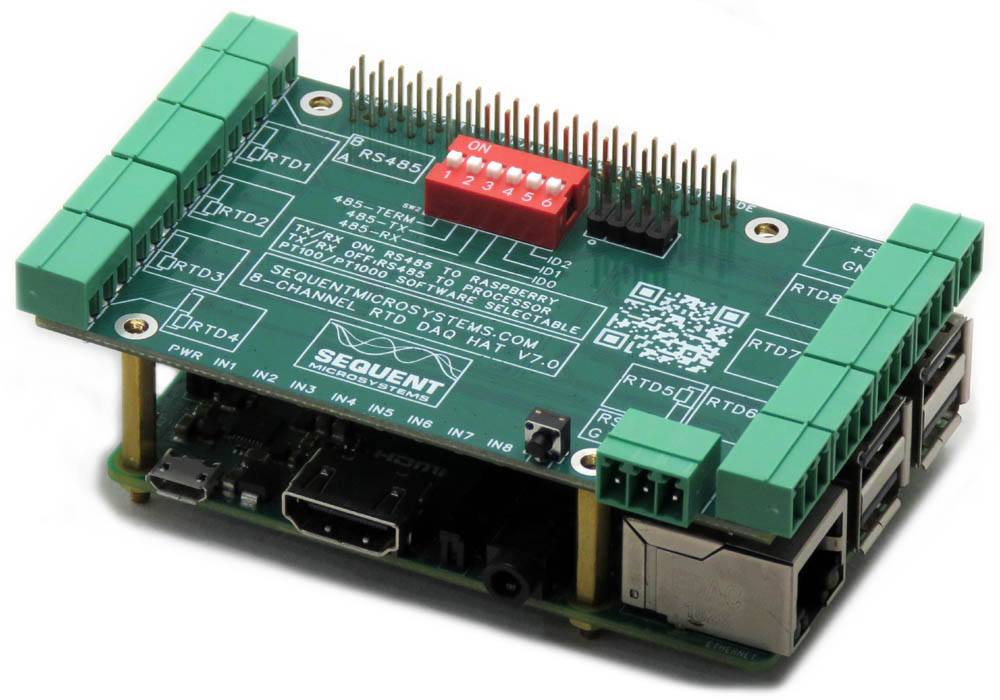
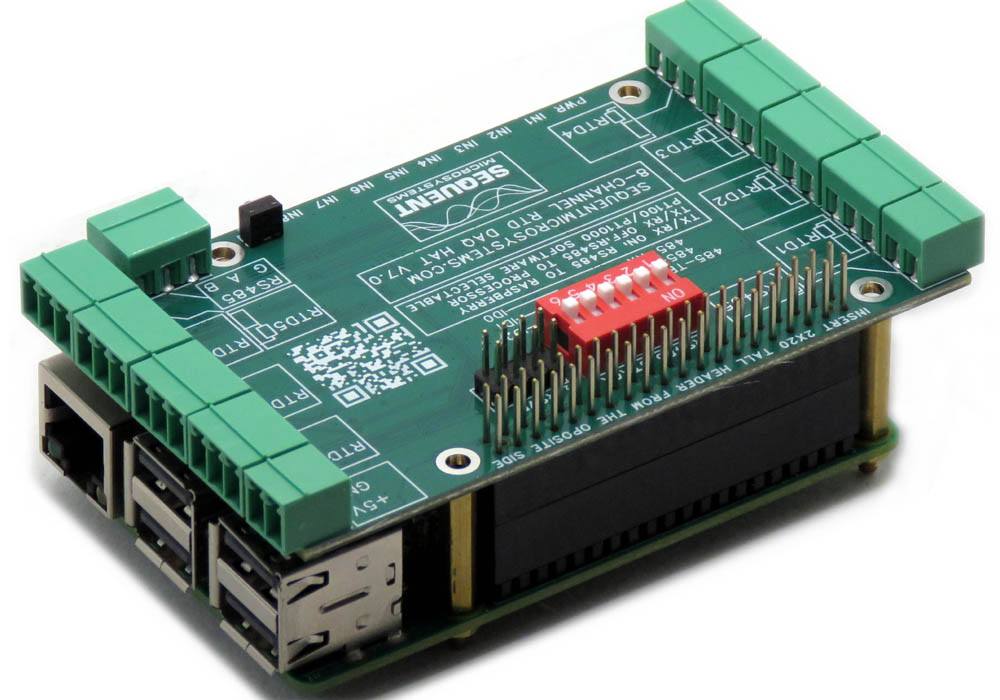
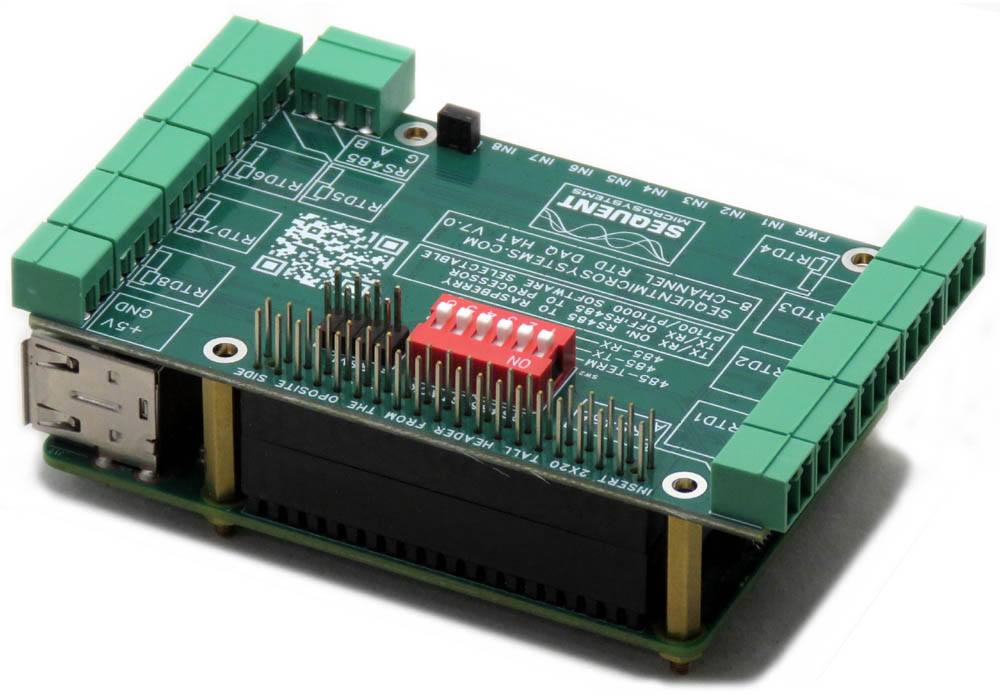
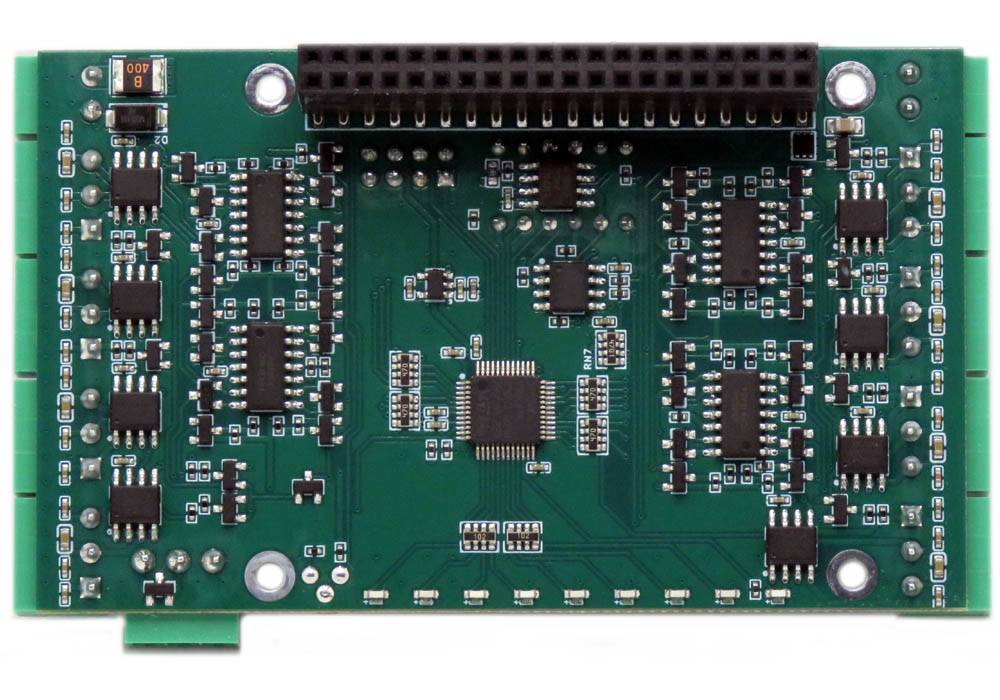

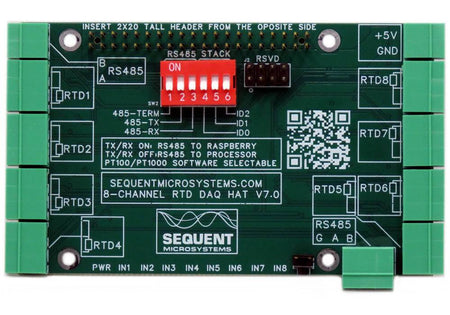
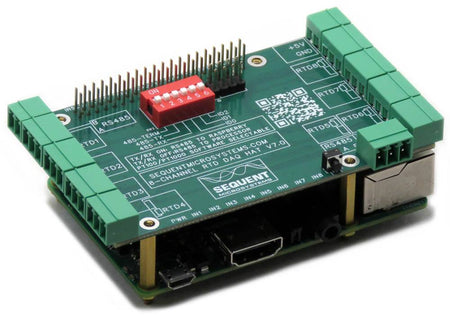
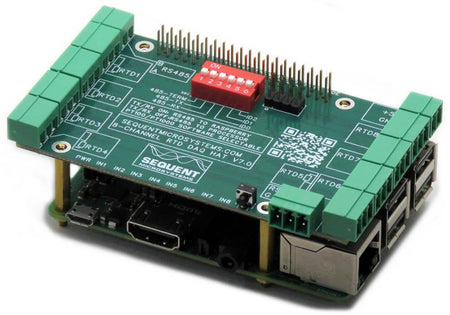
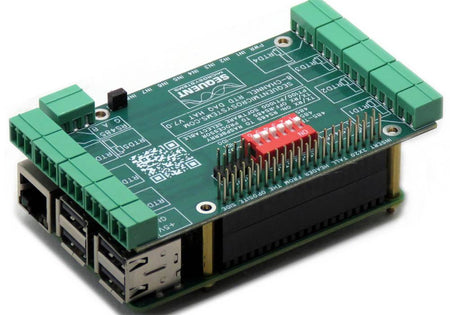
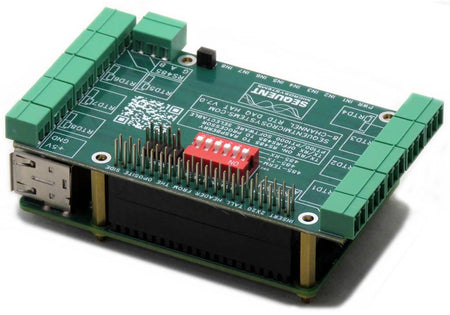
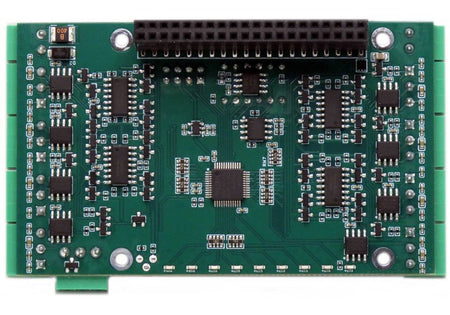

RTD Data Acquisition 8-Layer Stackable HAT for Raspberry Pi
Eight Channel RTD Data Aquisition HAT; 0.01% accuracy through calibration; PT100/1000 Sensors; RS485/MODBUS, Watchdog.
In stock
Regular price
$80.00
FEATURES
- NEW: V7 supports PT100 and PT1000 sensors
- NEW: Sensor selection in software. No jumpers!
- NEW: 5A current transfer for Raspberry Pi 5
- 24 bit delta-sigma A/D converters
- Factory accuracy: 0.1%
- Maximum accuracy (through calibration): 0.01%
- Maximum acquisition speed 40 cps
- Eight layer stackable to 64 RTD channels
- RS485/MODBUS transceiver
- PT100 sensors, -200°C to 765°C range
- PT1000 sensors, -50°C to 500°C range
- Programmable threshold LEDs on all inputs
- Pluggable Connectors 26-16 AWG wires
- On-board hardware watchdog able to power cycle the Raspberry Pi
- 5V power supply provides power to Raspberry Pi
- General Purpose Pushbutton
- On-board resettable fuse
- RTD Data Acquisition for Raspberry Pi
- Uses only I2C port, all GPIO pins available
- Works with any Raspberry Pi from ZERO to 5
- ECCN Code EAR99
- Command line
- Python library
- Node-Red nodes
- Modbus RTU
- CODESYS Driver
- OpenPLC module
- Arduino Library
-
Home Assistant Integration
The Revision 7 of the RTD card has an RS485 transceiver, works with PT100 and PT1000 sensors, and has programmable LEDs indicating the status of all inputs.
DESCRIPTION
Compatible with all Raspberry Pi versions from Zero to 5, the RTD Data Acquisition Card offers a compact and inexpensive solution for reading and storing data from up to 64 PT100 or PT1000 temperature sensors. Using 24 bit delta-sigma A/D converters with four channels each, the card achieves better than 0.1% accuracy. Field calibration with a precision 100Ω resistor can lead to 0.01% precision.
Since temperature measurement using RTD is based on resistance, the resistance in the lead wires and connectors must be taken into account when calculating the overall resistance in the system circuit. Using a 3-wire circuit design allows lead wire resistance to be factored out of the overall calculation.
COMPATIBILITY
The card is compatible with all Raspberry Pi versions from Zero to 5. It shares the I2C bus using only two of the Raspberry Pi’s GPIO pins to manage all eight cards. This feature leaves the remaining 24 GPIOs available for the user.
The card is compatible with all Raspberry Pi versions from Zero to 5. It shares the I2C bus using only two of the Raspberry Pi’s GPIO pins to manage all eight cards. This feature leaves the remaining 24 GPIOs available for the user.
POWER REQUIREMENTS
The card needs 5V to operate and can be powered from Raspberry Pi or from it's own pluggable connector. The cards needs 50mA to operate.
STACKING MULTIPLE CARDS
Up to eight RTD Data Acquisition cards can be stacked on your Raspberry Pi. Three positions of the configuration DIP Switch labeled ID0, ID1, ID2 are used to select the stack level. Cards can be stacked in any order.
BOARD LAYOUT

ELECTRICAL SPECIFICATIONS
MECHANICAL SPECIFICATIONS

SOFTWARE
SOFTWARE INTERFACES
You can write your own Data Acquisition system in C, C++, PERL or the language of your choice using the Command Line functions or the Python Library. A browser interface can easily be deployed using Node-Red.
FIELD CALIBRATION
Field calibration to 0.01% precision can be achieved using an external high precision resistor. Software commands permit the user to calibrate the card in two points (the 2 points must be as far as possible but inside the measurement range). The resulting values are stored in flash and used for resistance measurements compensation witch will reflect in the temperature readings. The resistance to temperature conversion is made by the simplest equation T = (R - R0)/(R0*k), where T is temperature in Celsius degree; R is the sensor resistance; R0 is the resistance at 0 deg Celsius (100 for PT100, 1000 for PT100) and k= 0.00385. If the user need to use the polynomial equation, the resistance measurements are available.
RS485/MODBUS Communication
The RTD Data Acquisition card contains a standard RS485 transceiver which can be accessed by the local processor or by Raspberry Pi. The desired configuration is set from two bypass jumpers on the configuration connector J3. See in the CARD LAYOUT jumpers "485-RX" and "485-TX". If jumpers are installed, Raspberry Pi can communicate with any device with an RS485 interface. In this configuration the card is a passive bridge which implements only the hardware levels required by the RS485 protocol. To use this configuration, you need to tell the local processor to release control of the RS485 bus:
~$ rtd [0] rs485wr 0 0 0 0 0
If jumpers are removed, the card operates as MODBUS slave and implements the MODBUS RTU protocol. Any MODBUS master can access all the card's inputs, and set all the outputs using standard MODBUS commands. A detailed list of commands implemented and parameters addresses can be found on GitHub:
In both configurations the local processor needs to be programmed to release (jumpers installed) or control (jumpers removed) the RS485 signals. See the command line online help for further information.
LED threshold signals
The RTD Data Acquisition card has eight LEDs that can be activated when the input reaches a preset threshold. The threshold can be set in software for each input.
FIRMWARE UPDATE
The card firmware can be updated in the field by running a command. The update is made with the latest firmware version located on our servers. More instructions about the process can be found on GitHub. Please make sure there is no process, like Node-Red or python scripts, that tries to access the card during the update process.
DOWNLOADS
ACCESSORIES
DIN-RAIL MOUNTING
The RTD Data Acquisition card can be installed parallel on a DIN-Rail using the DIN-Rail Kit Type 1, or perpendicular using the DIN-Rail Kit Type 2.
YOUR KIT
1. 8-Channel RTD HAT for Raspberry Pi

2. Mounting hardware
- Four M2.5x18mm male-female brass standoffs
- Four M2.5x5mm brass screws
- Four M2.5 brass nuts

4. All female connector plugs

QUICK START
- Plug your card on top of your Raspberry Pi and power up the system
- Enable I2C communication on Raspberry Pi using raspi-config.
- Install the software from github.com:
- ~$ git clone https://github.com/SequentMicrosystems/rtd-rpi.git
- ~$ cd /home/pi/rtd-rpi
- ~/rtd-rpi$ sudo make install
-
~/rtd-rpi$ rtd
The program will respond with a list of available commands.
Related products
-
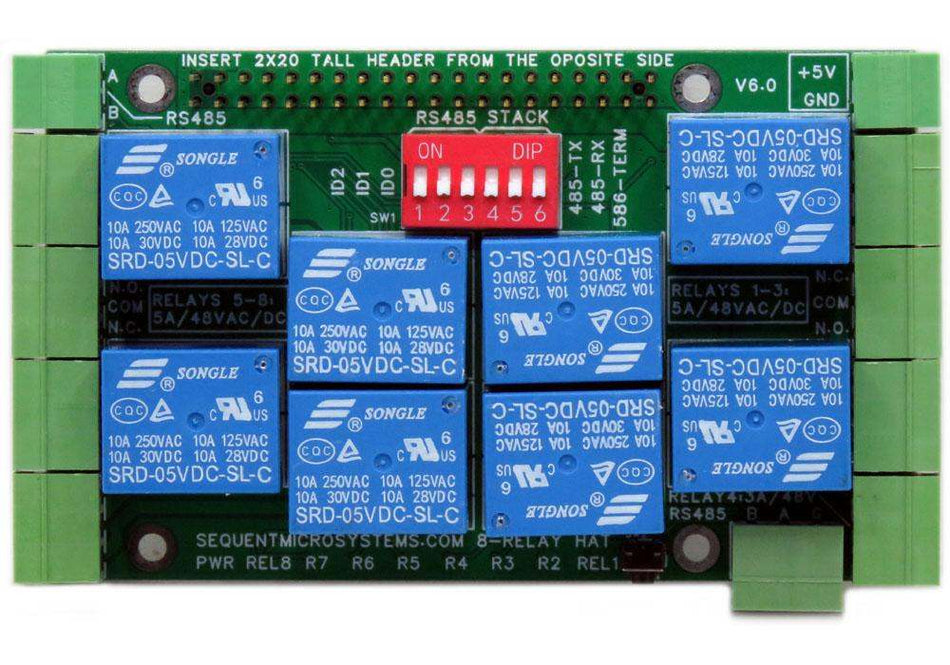 In stock
In stockEight Relays 4A/120V 8-Layer Stackable HAT for Raspberry Pi
Eight Relays 4A/120VAC, 24VDC N.O./N.C. contacts and LED indicators; RS485 Port. -
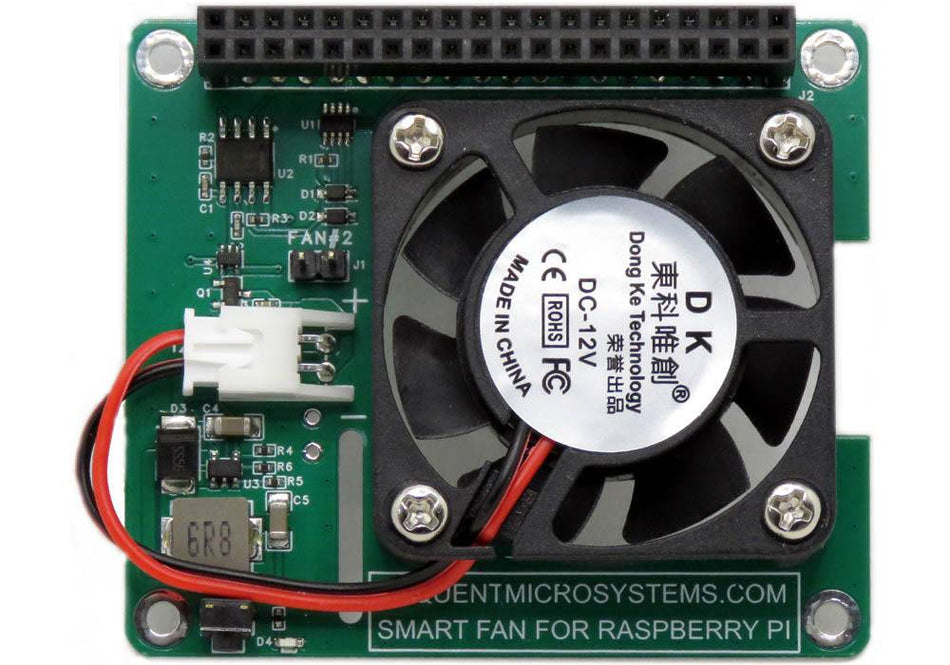 In stock
In stockSmart Fan HAT the Best Cooling Solution for Raspberry Pi
PWM controlled 40x40x10mm Fan keeps Raspberry Pi temperature constant; Stackable with any other HAT. -
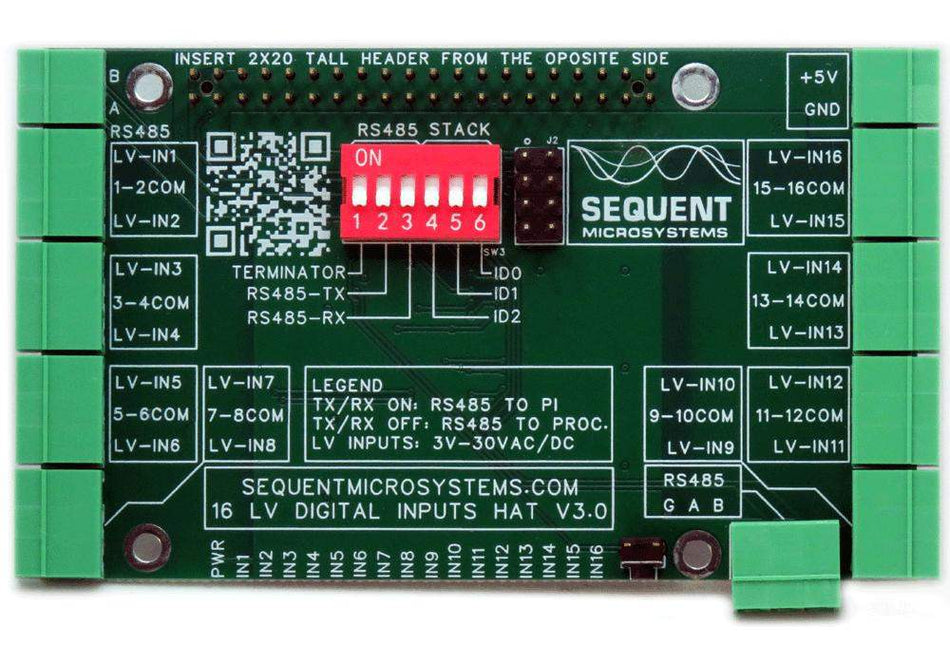 In stock
In stockSixteen LV Digital Inputs 8-Layer Stackable HAT for Raspberry Pi
Sixteen 3V-48V Opto-isolated Inputs with LED indicators; RS485/MODBUS, Hardware Watchdog. -
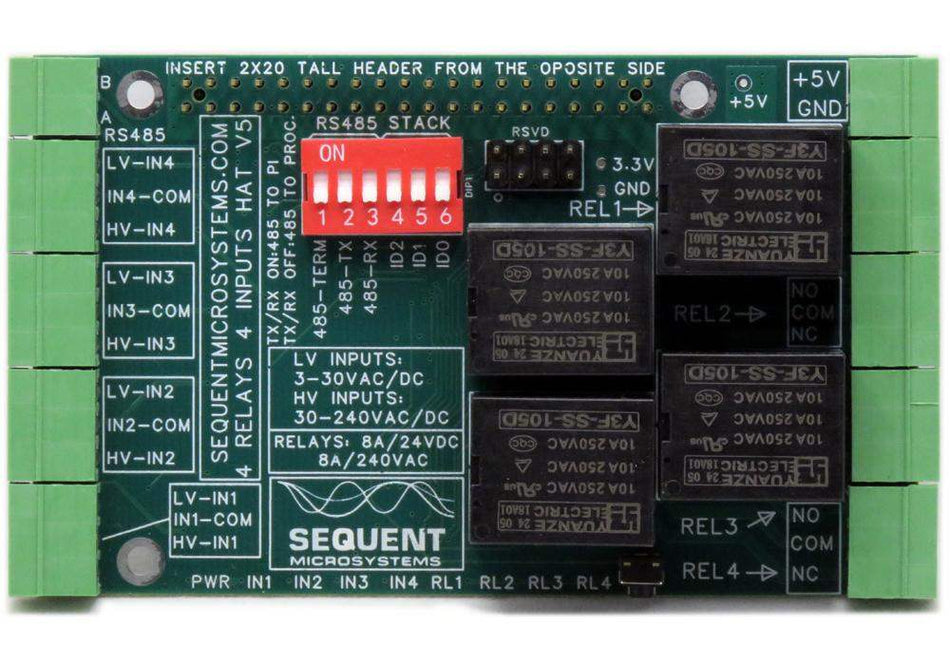 In stock
In stockFour Relays four HV Inputs 8-Layer Stackable HAT for Raspberry Pi
Four Relays 8A/240VAC; Four opto-isolated Inputs 3V-240V; RS485/MODBUS; Quadrature encoder, PPS counters, PWM inputs;

